dke602_fm.pdf
SLIDING MODE CONTROL IN ENGINEERING
Series Introduction
Preface
Contributors
Contents
dke602_ch01.pdf
Contents
Chapter 1: Introduction: An Overview of Classical Sliding Mode Control
1.1 Introduction and historical account
1.2 An introductory example
1.3 Dynamics in the sliding mode
1.3.1 Linear systems
1.3.2 Nonlinear systems
1.3.3 The chattering phenomenon
1.4 Sliding mode control design
1.4.1 Reachability condition
1.4.2 Robustness properties
1.5 Trajectory and model following
1.5.1 Trajectory following
1.5.2 Model following
1.6 Conclusion
References
dke602_ch02.pdf
Contents
Chapter 2: Differential Inclusions and Sliding Mode Control
2.1 Introduction
2.2 Discontinuous differential equations and differential inclusions
2.3 Differential inclusions and Filippov solutions
2.4 Viability and equivalent control
2.5 Robustness and discontinuous control
2.6 Numerical treatment
2.7 Mathematical appendix
2.8 Bibliographical comments
Acknowledgements
References
dke602_ch03.pdf
Contents
Chapter 3: Higher-Order Sliding Modes
3.1 Introduction
3.2 Definitions of higher order sliding modes
3.2.1 Sliding modes on manifolds
3.2.2 Sliding modes with respect to
constraint functions
3.3 Higher order sliding modes in
control systems
3.3.1 Ideal sliding
3.3.2 Real sliding and finite time convergence
3.4 Higher order sliding stability in
relay systems
3.4.1 2-sliding stability in relay systems
3.4.2 Relay system instability with
sliding order more than 2
3.5 Sliding order and dynamic actuators
3.5.1 Stability of 2-sliding modes in systems
with fast actuators
3.5.2 Systems with fast actuators of relative
degree 3 and higher
3.6 2-sliding controllers
3.6.1 2-sliding dynamics
3.6.2 Twisting algorithm
3.6.3 Sub-optimal algorithm
3.6.4 Super-twisting algorithm
3.6.5 Drift algorithm
3.6.6 Algorithm with a prescribed convergence law
3.6.7 Examples
3.7 Arbitrary-order sliding controllers
3.7.1 The problem statement
3.7.2 Controller construction
3.7.3 Examples
3.8 Conclusions
References
dke602_ch04.pdf
Contents
Chapter 4: Sliding Mode Observers
4.1 Introduction
4.2 Preliminary example
4.3 Output and output derivative injection form
4.3.1 Nonlinear observer
4.3.2 Sliding observer for output and output derivative nonlinear injection form
4.4 Triangular input observer form
4.4.1 Sliding mode observer design for triangular input observer form
4.4.2 Observer matching condition
4.5 Simulations and comments
4.6 Conclusion
4.7 Appendix
4.7.1 Proof of Proposition 39
4.7.2 Proof of Theorem 41
4.7.3 Proof of Theorem 49
References
dke602_ch05.pdf
Contents
Chapter 5: Dynamic Sliding Mode Control and Output Feedback
5.1 Introduction
5.2 Static output feedback of uncertain systems
5.3 Output feedback sliding mode control for uncertain systems via dynamic compensation
5.3.1 Dynamic compensation (observer based)
5.3.2 Control law construction
5.3.3 Design example
5.4 Dynamic sliding mode control for nonlinear systems
5.4.1 Design example
5.5 Conclusions
References
dke602_ch06.pdf
Contents
Chapter 6: Sliding Modes, Passivity, and Flatness
6.1 Introduction
6.2 The permanent magnet stepper motor
6.2.1 The simpler D-Q nonlinear model of the PM stepper motor
6.2.2 The control problem
6.2.3 A passivity canonical model of the PM stepper motor
6.2.4 A controller based on "energy shaping plus damping injection"
6.2.5 Differential flatness of the system
6.2.6 A dynamic passivity plus flatness based controller
6.2.7 Simulation results
6.2.8 A pulse width modulation implementation
6.3 The "boost" DC-to-DC power converter
6.3.1 Flatness of the "boost" converter
6.3.2 Passivity properties through flatness
6.3.3 A passivity-based sliding mode controller
6.3.4 Non-minimum phase output stabilization
6.3.5 Trajectory planning
6.3.6 Simulation results
6.3.7 Dc-to-ac power conversion
6.3.8 An iterative procedure for generating a suitable inductor current reference
6.3.9 Simulation results
6.4 Conclusions
References
dke602_ch07.pdf
Contents
Chapter 7: Stability and Stabilization
7.1 Introduction
7.2 Notation
7.3 Generalized regular form
7.3.1 Obtention of the regular form
7.3.2 Effect of perturbations on the regular form
7.4 Estimation of initial sliding domain
7.4.1 Problem formulation
7.4.2 Sliding domain and initial domain of sliding motion
7.4.3 Application
7.5 Stabilization
7.5.1 Stabilization in the case d = m
7.5.2 Stabilization in the case d > m
7.6 Conclusion
References
dke602_ch08.pdf
Contents
Chapter 8: Discretization Issues
8.1 Introduction
8.2 Mathematical recalls
8.3 Classical sliding modes in discrete time
8.4 Second-order sliding mode under sampling
8.5 The sampled "twisting algorithm"
References
dke602_ch09.pdf
Contents
Chapter 9: Adaptive and Sliding Mode Control
9.1 Introduction
9.2 Identification of continuous linear systems in I/O form
9.3 MRAC model reference adaptive control
9.3.1 MRAC with accessible states
9.3.2 Adaptive control for SISO plant in I/O form: an introductory example with relative degree equal to one
9.3.3 Generalization to system of relative degree greater than one
9.4 Sliding mode and adaptive control
9.5 Combining sliding mode with adaptive control
9.6 Conclusions
References
dke602_ch10.pdf
Contents
Chapter 10: Steady Modes in Relay Systems with Delay
10.1 Introduction
The simplest example of steady modes
Statement of the problem
Organization of the material
10.2 Steady modes and stability
10.2.1 Steady modes
10.2.2 Stability
10.3 Singular perturbation in relay systems with time delay
10.3.1 Existence of stable zero frequency periodic steady modes for a singularly perturbed multidimensional system
10.3.2 Existence of stable zero frequency steady modes in systems of arbitrary order
10.4 Design of delay controllers of relay type
10.4.1 Stabilization of the simplest unstable system
10.4.2 Stable systems with bounded perturbation and relay controllers with delay
10.4.3 Statement of the adaptive control problem
10.4.4 The case of definite systems
10.4.5 The case of indefinite systems
10.5 Generalizations and open problems
10.5.1 The case when \F(x)\ > 1 for some x
10.5.2 Systems and steady modes of the second order
10.5.3 Stability and instability of steady modes for multidimensional case
10.6 Conclusions
10.7 Appendix: proofs
References
dke602_ch11.pdf
Contents
Chapter 11: Sliding Mode Control for Systems with Time Delay
11.1 Introduction
11.2 SMC under delay effect: a case study
11.2.1 Problem formulation
11.2.2 A case study
11.2.3 An example with simulation
11.3 A SMC design for linear time delay systems
11.3.1 Regular form
11.3.2 Asymptotic stability of systems with small delays
11.3.3 Sliding mode controller synthesis
11.3.4 Example: delay in the state
11.4 Conclusion
References
dke602_ch12.pdf
Contents
Chapter 12: Sliding Mode Control of Infinite-Dimensional Systems
12.1 Introduction
Notation
12.2 Motivation: disturbance rejection in Hilbert space
12.3 Mathematical description of sliding modes in Hilbert space
12.3.1 Semilinear differential equation
12.3.2 Discontinuous control input and sliding mode equation
12.4 Unit control synthesis for uncertain systems with a finite-dimensional unstable part
12.4.1 Disturbance rejection in exponentially stabilizable systems
12.4.2 Disturbance rejection in minimum phase systems
12.5 Conclusions
References
dke602_ch13.pdf
Contents
Chapter 13: Application of Sliding Mode Control to Robotic Systems
13.1 Introduction
13.2 Modeling and properties of robotic systems
13.2.1 Dynamics of mechanical systems
13.2.2 Control design approach
13.2.3 Examples
13.3 Sliding mode for robot control
13.3.1 Sliding mode control for a pneumatic system
13.3.2 Sliding mode control of a hydraulic robot
13.3.3 Simulation results
13.4 SM observers based control
13.4.1 Observer design
13.4.2 Tracking error equation: observer and control
13.4.3 Stability of observer based control
13.4.4 Simulation results
13.4.5 Conclusion
13.5 Appendix
13.5.1 Pneumatic actuators model
13.5.2 Hydraulic manipulator model
13.5.3 Proof of lemma
References
dke602_ch14.pdf
Contents
Chapter 14: Sliding Modes Control of the Induction Motor: a Benchmark Experimental Test
14.1 Introduction
14.2 Sliding modes control
14.3 Application to the induction motor
14.4 Benchmark "horizontal handling"
14.4.1 Speed and flux references and load disturbance
14.4.2 Induction motor parameters (squirrel cage rotor)
14.4.3 Variations of the parameters for robustness test
14.5 Simulation and experimentation results
14.5.1 Results of simulations
14.5.2 Experimental results
14.6 Conclusion
References
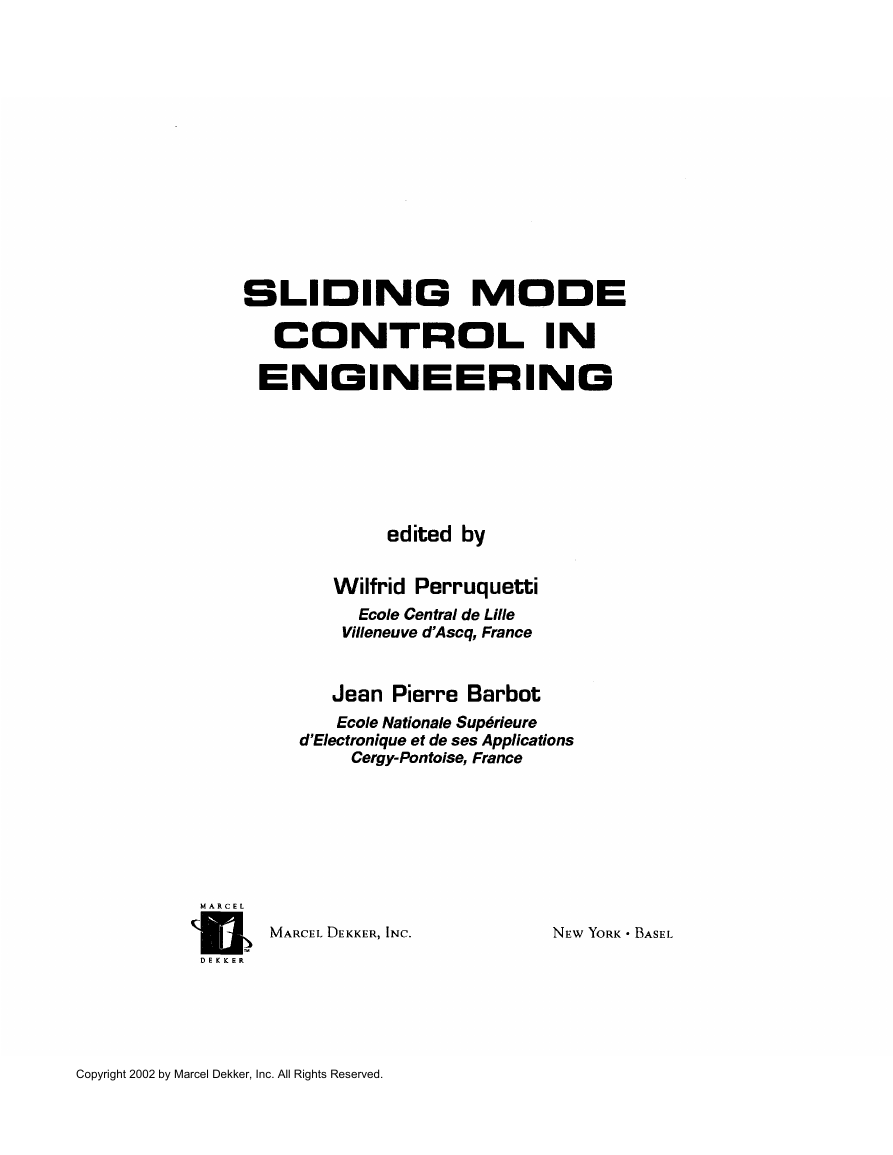
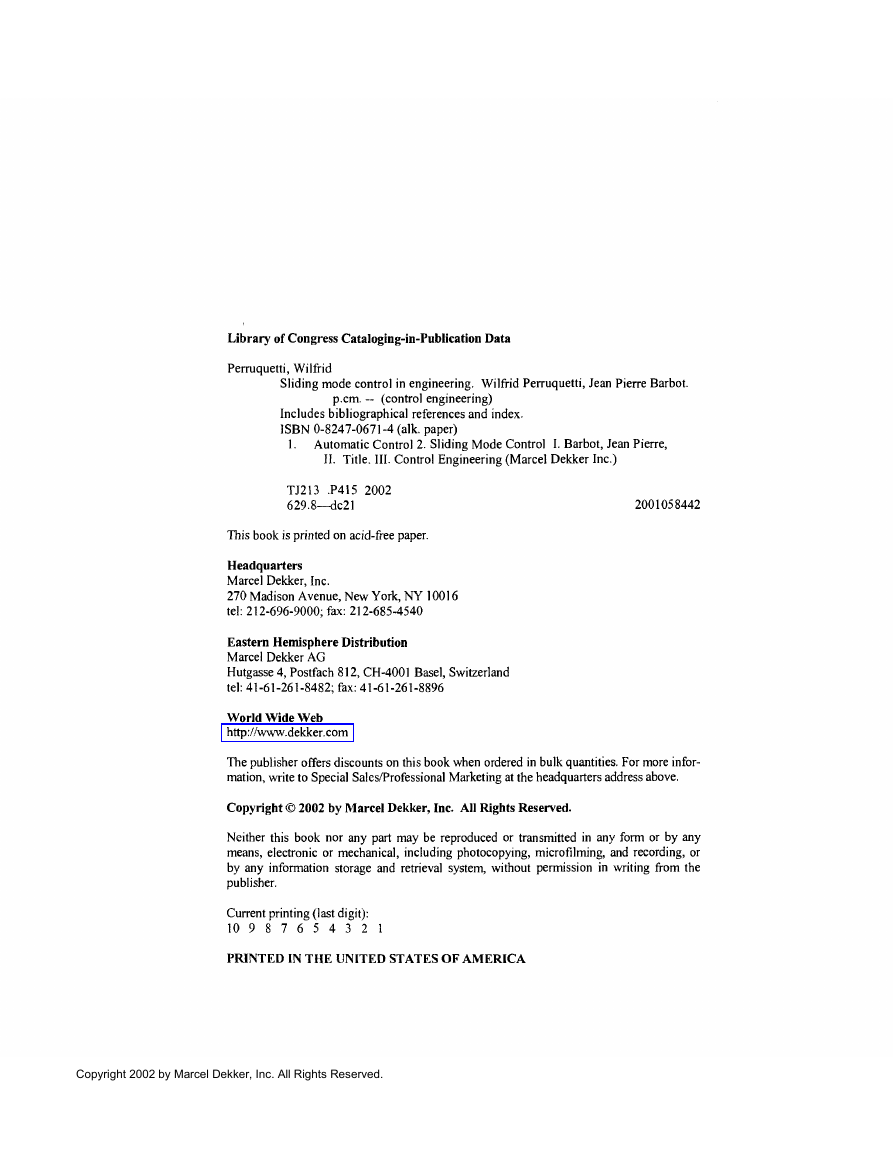
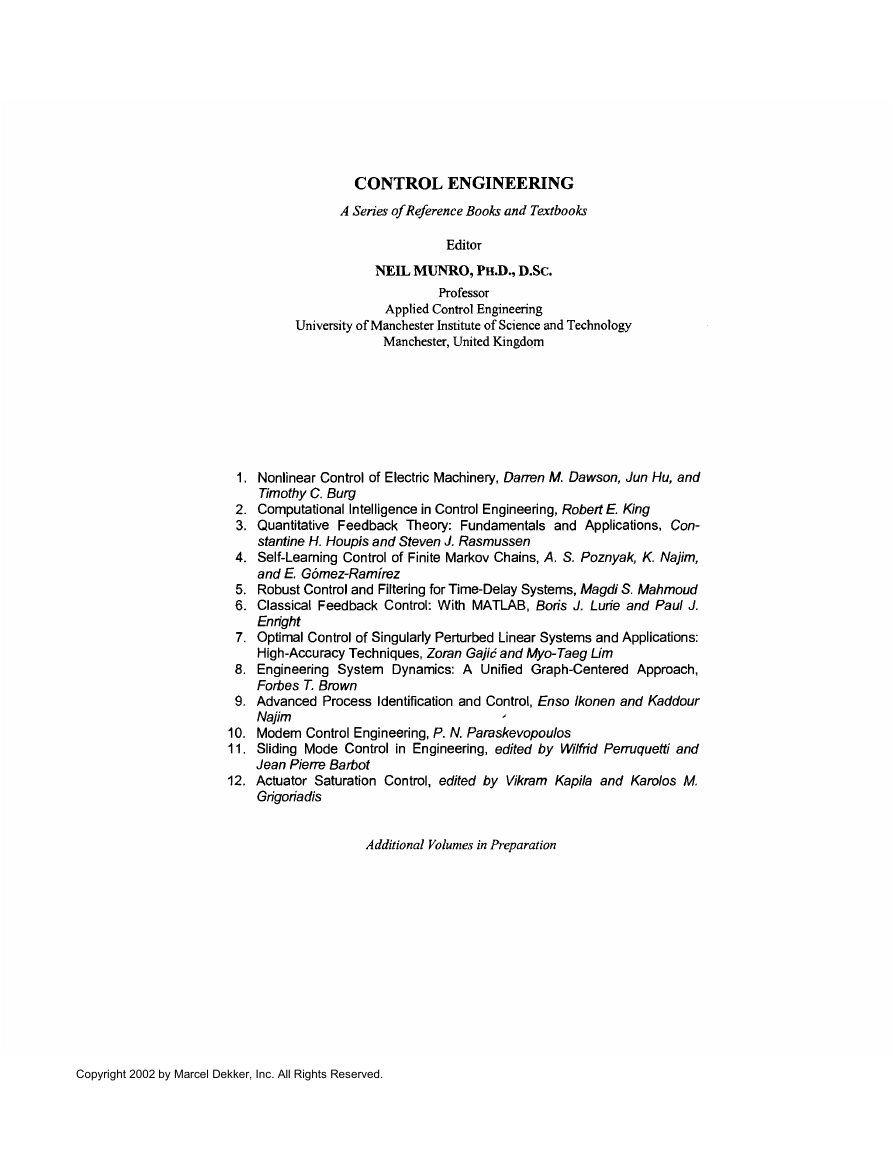
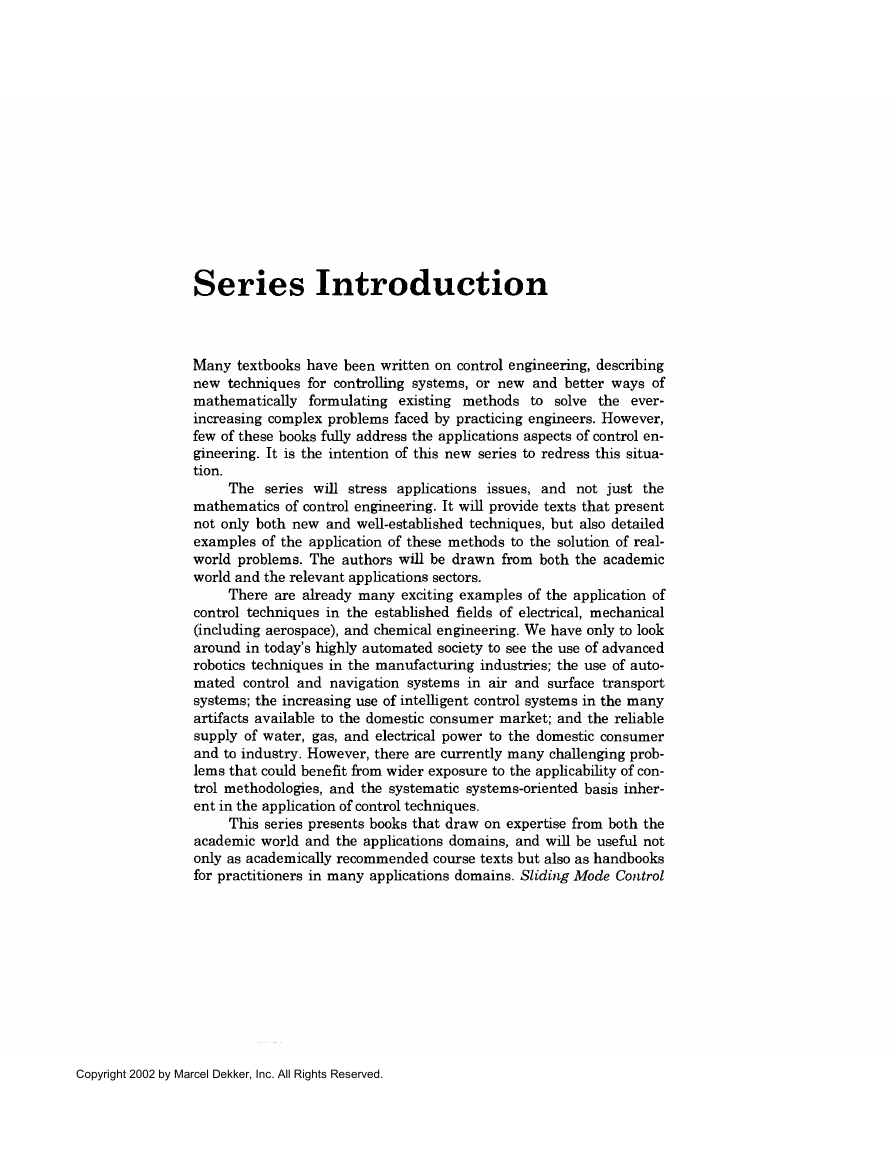

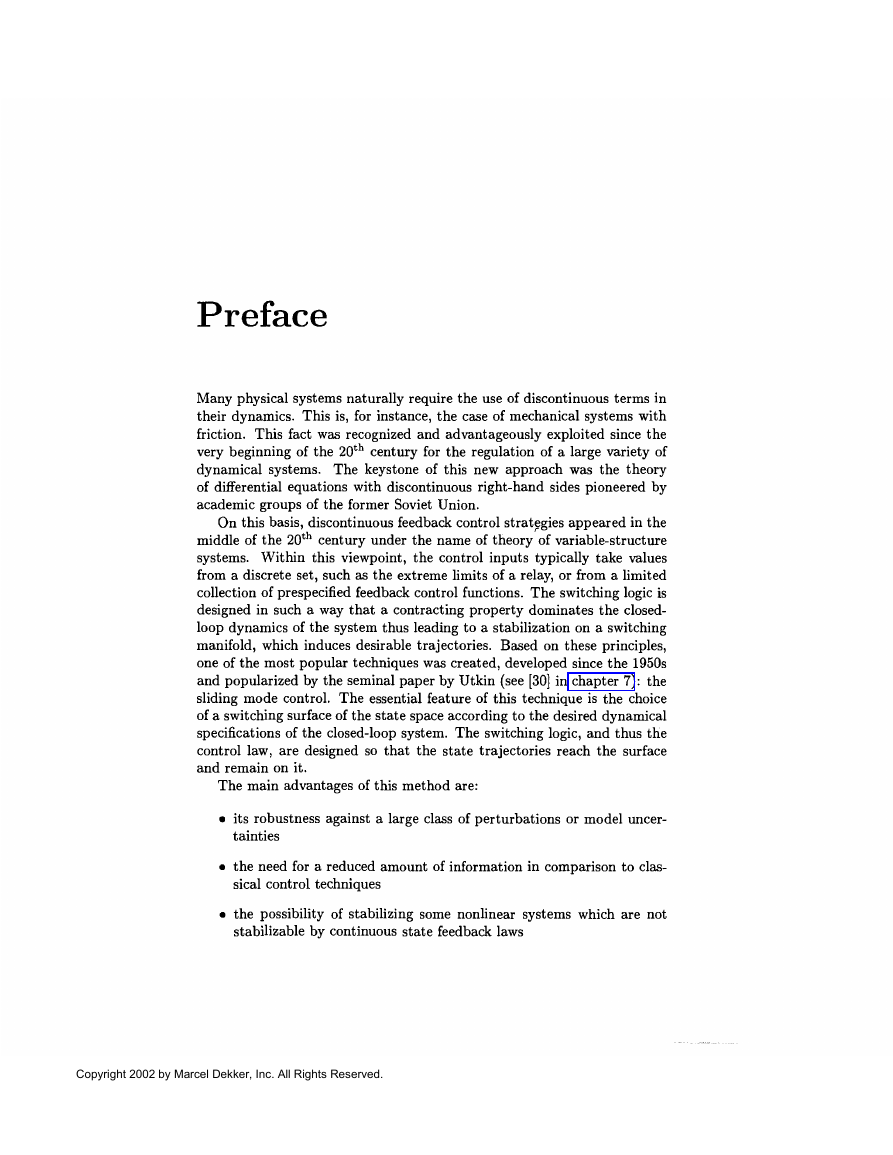
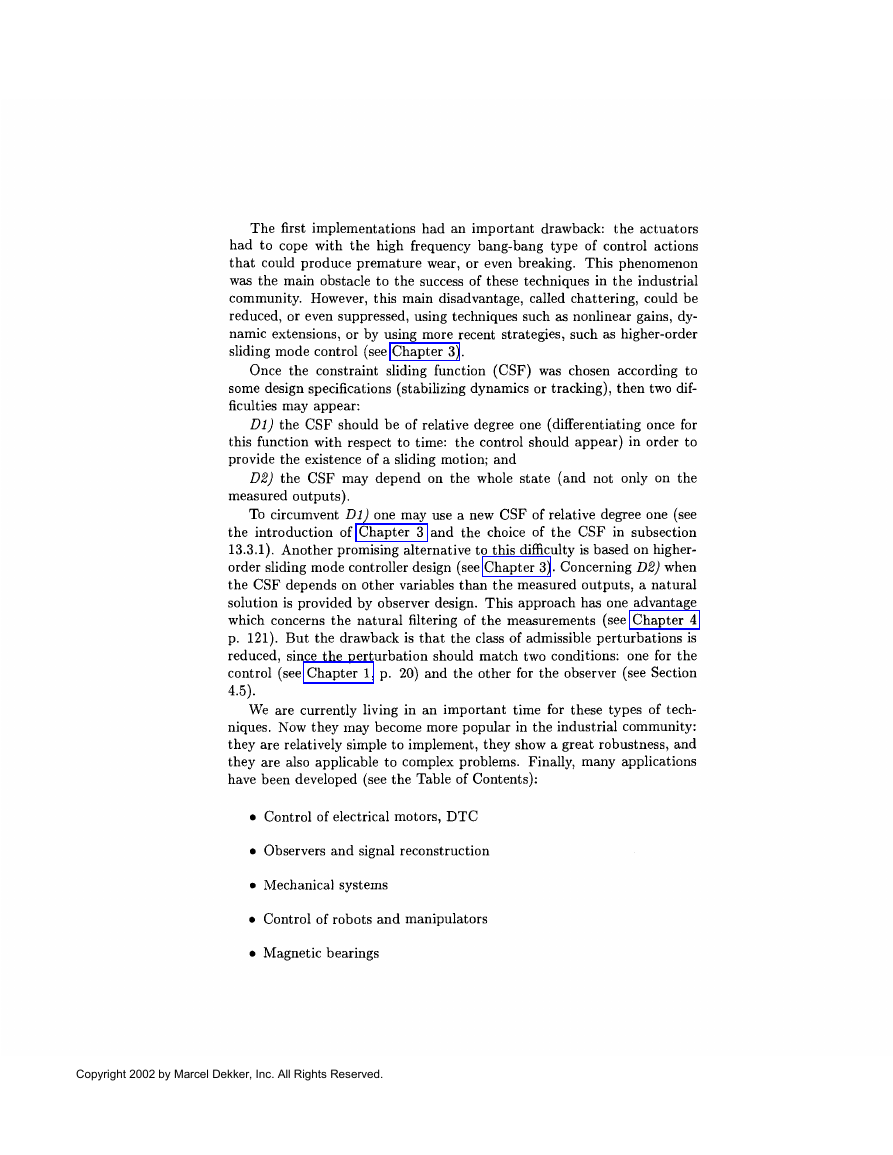
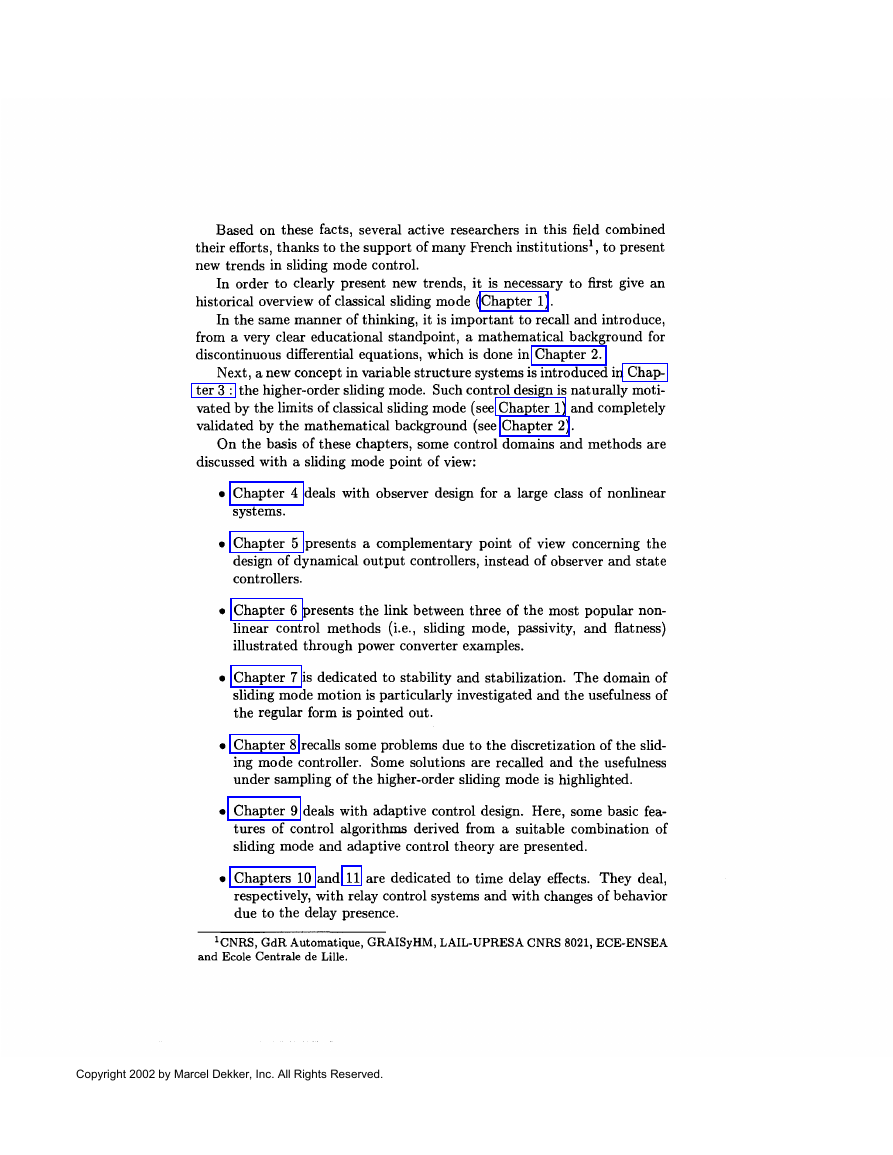








 2023年江西萍乡中考道德与法治真题及答案.doc
2023年江西萍乡中考道德与法治真题及答案.doc 2012年重庆南川中考生物真题及答案.doc
2012年重庆南川中考生物真题及答案.doc 2013年江西师范大学地理学综合及文艺理论基础考研真题.doc
2013年江西师范大学地理学综合及文艺理论基础考研真题.doc 2020年四川甘孜小升初语文真题及答案I卷.doc
2020年四川甘孜小升初语文真题及答案I卷.doc 2020年注册岩土工程师专业基础考试真题及答案.doc
2020年注册岩土工程师专业基础考试真题及答案.doc 2023-2024学年福建省厦门市九年级上学期数学月考试题及答案.doc
2023-2024学年福建省厦门市九年级上学期数学月考试题及答案.doc 2021-2022学年辽宁省沈阳市大东区九年级上学期语文期末试题及答案.doc
2021-2022学年辽宁省沈阳市大东区九年级上学期语文期末试题及答案.doc 2022-2023学年北京东城区初三第一学期物理期末试卷及答案.doc
2022-2023学年北京东城区初三第一学期物理期末试卷及答案.doc 2018上半年江西教师资格初中地理学科知识与教学能力真题及答案.doc
2018上半年江西教师资格初中地理学科知识与教学能力真题及答案.doc 2012年河北国家公务员申论考试真题及答案-省级.doc
2012年河北国家公务员申论考试真题及答案-省级.doc 2020-2021学年江苏省扬州市江都区邵樊片九年级上学期数学第一次质量检测试题及答案.doc
2020-2021学年江苏省扬州市江都区邵樊片九年级上学期数学第一次质量检测试题及答案.doc 2022下半年黑龙江教师资格证中学综合素质真题及答案.doc
2022下半年黑龙江教师资格证中学综合素质真题及答案.doc